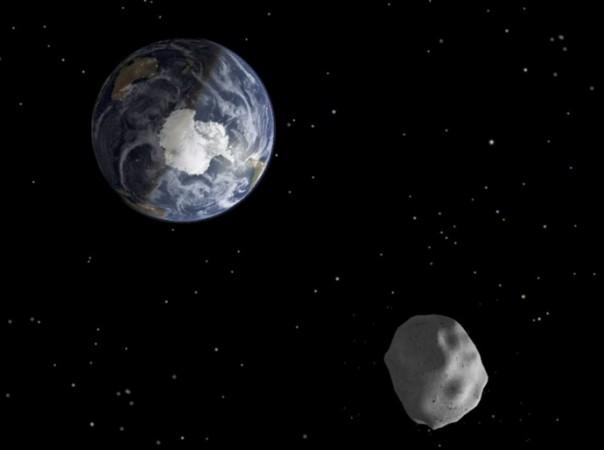
A huge asteroid would possibly have an encounter with Earth in the future that may wipe out life.
Scientists at the University of Tennessee (UT) have discovered that the asteroid 1950 DA, which spins so quickly that it defies gravity, might destroy life on earth on 16 March 2880.
The findings, published in the science journal Nature, said the asteroid has one-in-300 chance of hitting the planet in 2880.
The findings provided important information on the asteroid's diameter and speed. The researchers in their paper mentioned that 1950 DA asteroid has a diameter of one kilometer (3,280 feet).
The asteroid is travelling at the speed of 14 kilometers per second (8.7 miles) to the Earth and would hit the planet in 2880 at a speed of over 61,000 kilometers per hour (37,900 miles), according to New York Post.
The rotating speed of the asteroid is so strong that it effectively experiences negative gravity. The high speed would generally result in space rock to fly apart, but the cohesive forces, van der Waals, detected on the asteroid are holding it together.
"We found that 1950 DA is rotating faster than the breakup limit for its density," Ben Rozitis, a postdoctoral researcher said, according to UT. "So if just gravity were holding this rubble pile together, as is generally assumed, it would fly apart. Therefore, interparticle cohesive forces must be holding it together."
Scientists in their study have also found out that there is a possible way to avert the collision of the asteroid and the planet.
"Following the February 2013 asteroid impact in Chelyabinsk, Russia, there is renewed interest in figuring out how to deal with the potential hazard of an asteroid impact," Rozitis said. "Understanding what holds these asteroids together can inform strategies to guard against future impacts."
Researchers believe that there is enough time to avoid the huge disaster. Rozitis explained blowing up the giant asteroid might cause several massive impacts.
So instead of blowing up the asteroid, they could make small changes to its surface in order to break it apart.









